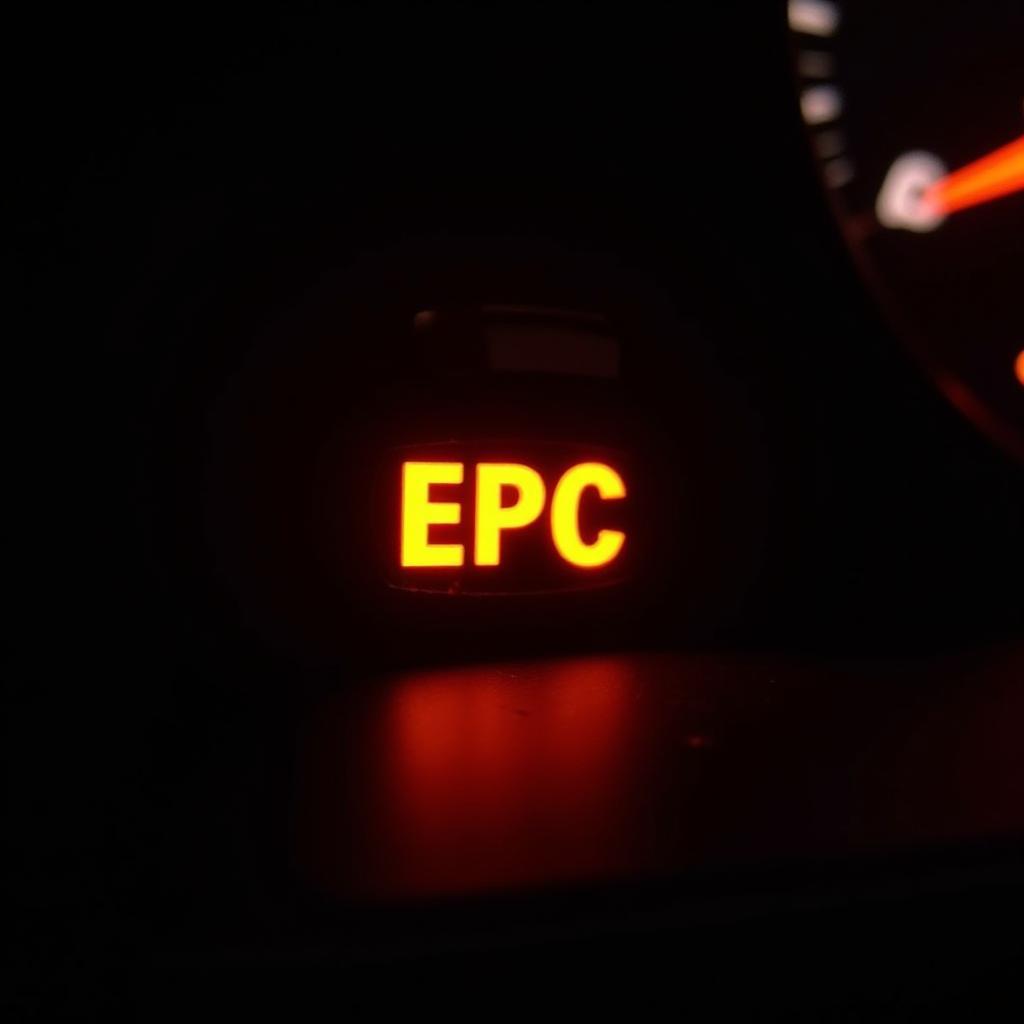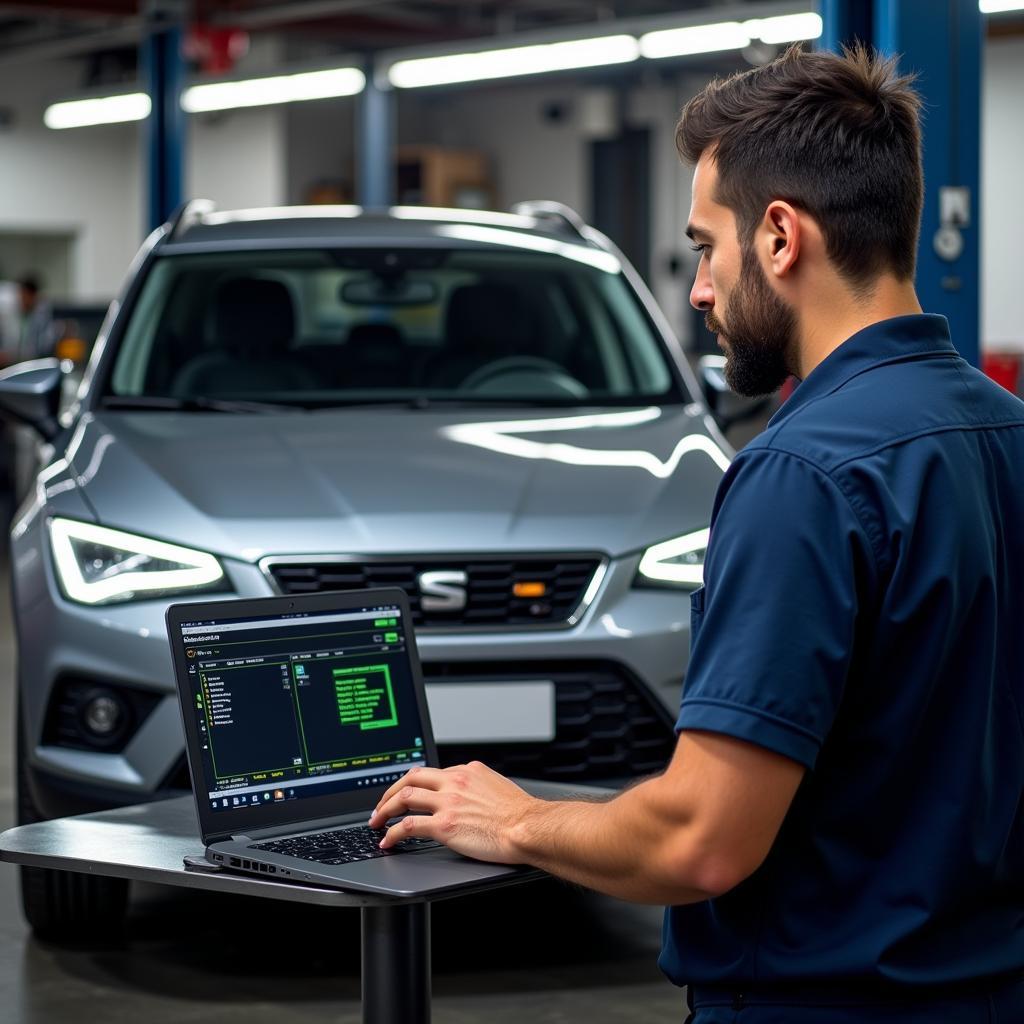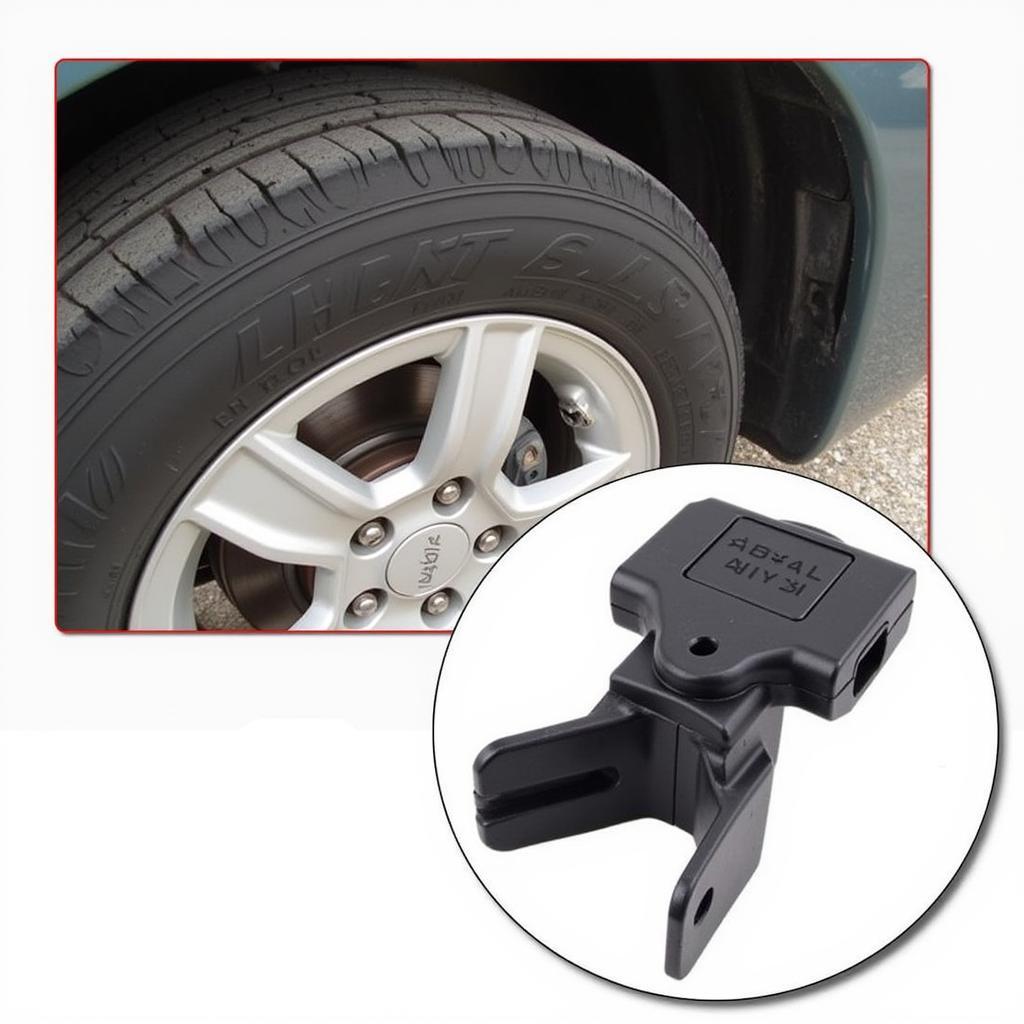The EPC warning light, short for Electronic Power Control, is a common sight for many Seat Arona drivers. While this amber light on your dashboard can indicate several issues, it typically signals a problem with your car’s electronic throttle control system. This comprehensive guide delves into the potential causes of an EPC warning light on a Seat Arona and provides practical solutions to get you back on the road quickly and safely.
Understanding the EPC System and Its Significance
Before we dive into the specifics of the EPC warning light in a Seat Arona, it’s crucial to understand what the EPC system does. The EPC system is the brain behind your car’s throttle pedal, managing the engine’s air and fuel intake to optimize performance and fuel efficiency.
A malfunctioning EPC system can lead to a variety of driving issues, ranging from reduced engine power to difficulty starting the car. In extreme cases, a faulty EPC system can even cause the car to go into “limp mode,” a safety feature that limits the engine’s output to prevent further damage.
Common Causes of the EPC Warning Light on a Seat Arona
A lit EPC warning light on your Seat Arona doesn’t always point to a catastrophic failure. Here are some of the most common culprits behind this warning light:
-
Faulty Throttle Position Sensor: This sensor relays information about the position of your gas pedal to the engine control unit (ECU). A malfunctioning sensor can send incorrect data, triggering the EPC light.
-
Malfunctioning Mass Air Flow Sensor: This sensor measures the amount of air entering the engine, which is crucial for determining the correct air-fuel mixture. A faulty sensor can disrupt this balance, leading to the EPC light illuminating.
-
Issues with the Throttle Body: The throttle body is responsible for controlling the amount of air entering the engine. A build-up of dirt or debris can hinder its operation, potentially causing the EPC light to come on.
-
Vacuum Leaks: Any leaks in the engine’s vacuum system can disrupt the air-fuel mixture and affect the throttle body’s performance, triggering the EPC light.
-
Faulty Brake Light Switch: In some instances, a faulty brake light switch can interfere with the EPC system, leading to the warning light appearing.
-
Software Glitches: Like any computer system, the ECU in your Seat Arona can experience software glitches that may trigger the EPC light.
 EPC Warning Light on Dashboard
EPC Warning Light on Dashboard
How to Troubleshoot an EPC Warning Light on Your Seat Arona
While it’s always recommended to have a qualified mechanic diagnose the EPC warning light, here are some troubleshooting steps you can try yourself:
-
Check Your Gas Cap: Believe it or not, a loose or faulty gas cap can sometimes trigger the EPC light. Ensure your gas cap is securely fastened.
-
Inspect Your Brake Lights: As a faulty brake light switch can cause the EPC light to illuminate, visually inspect your brake lights to ensure they are functioning correctly.
-
Check for Diagnostic Trouble Codes (DTCs): If you have an OBD-II scanner, you can check for any stored DTCs related to the EPC system. These codes can provide valuable insights into the root cause of the problem.
When to Seek Professional Help
While the troubleshooting tips above might resolve the issue, it’s essential to seek professional help if:
- The EPC warning light remains illuminated after attempting the troubleshooting steps.
- Your car experiences performance issues like reduced engine power, rough idling, or stalling.
- You’re uncomfortable diagnosing the issue yourself.
A qualified mechanic specializing in Seat vehicles can accurately diagnose the problem using advanced diagnostic tools and recommend the appropriate course of action.
The Role of Remote Diagnostics and Software Solutions
In today’s technologically advanced world, remote diagnostics and software solutions are playing an increasingly vital role in diagnosing and resolving car issues, including those related to the EPC system.
 Mechanic Performing Remote Diagnostics
Mechanic Performing Remote Diagnostics
Here’s how remote diagnostics and software solutions are transforming the automotive repair landscape:
- Faster Diagnosis: Remote diagnostics allow technicians to quickly identify the root cause of the problem, often without needing to physically inspect the vehicle.
- Software Updates and Reprogramming: In many cases, software glitches triggering the EPC light can be resolved remotely through software updates or reprogramming.
- Convenience and Efficiency: Remote diagnostics and software solutions eliminate the need for multiple trips to the mechanic, saving time and hassle.
By leveraging the power of remote diagnostics and software solutions, car owners can benefit from faster, more efficient, and convenient repair experiences.
Expert Insight: The Importance of Timely EPC Warning Light Diagnosis
We spoke to John Miller, a seasoned automotive electrician with over 20 years of experience specializing in European vehicles, about the significance of addressing the EPC warning light promptly. He emphasized, “Ignoring the EPC warning light can lead to more severe engine problems down the line, potentially resulting in costly repairs. Addressing the issue promptly can save you from headaches and expensive fixes in the long run.”
Conclusion: Don’t Ignore the EPC Warning Light
The EPC warning light in your Seat Arona is a crucial indicator of a potential issue with your car’s vital systems. While it might seem intimidating, understanding the common causes and knowing how to troubleshoot the problem can empower you to take the right course of action. Remember, timely diagnosis and repair are key to preventing further damage and ensuring the longevity and optimal performance of your Seat Arona.


